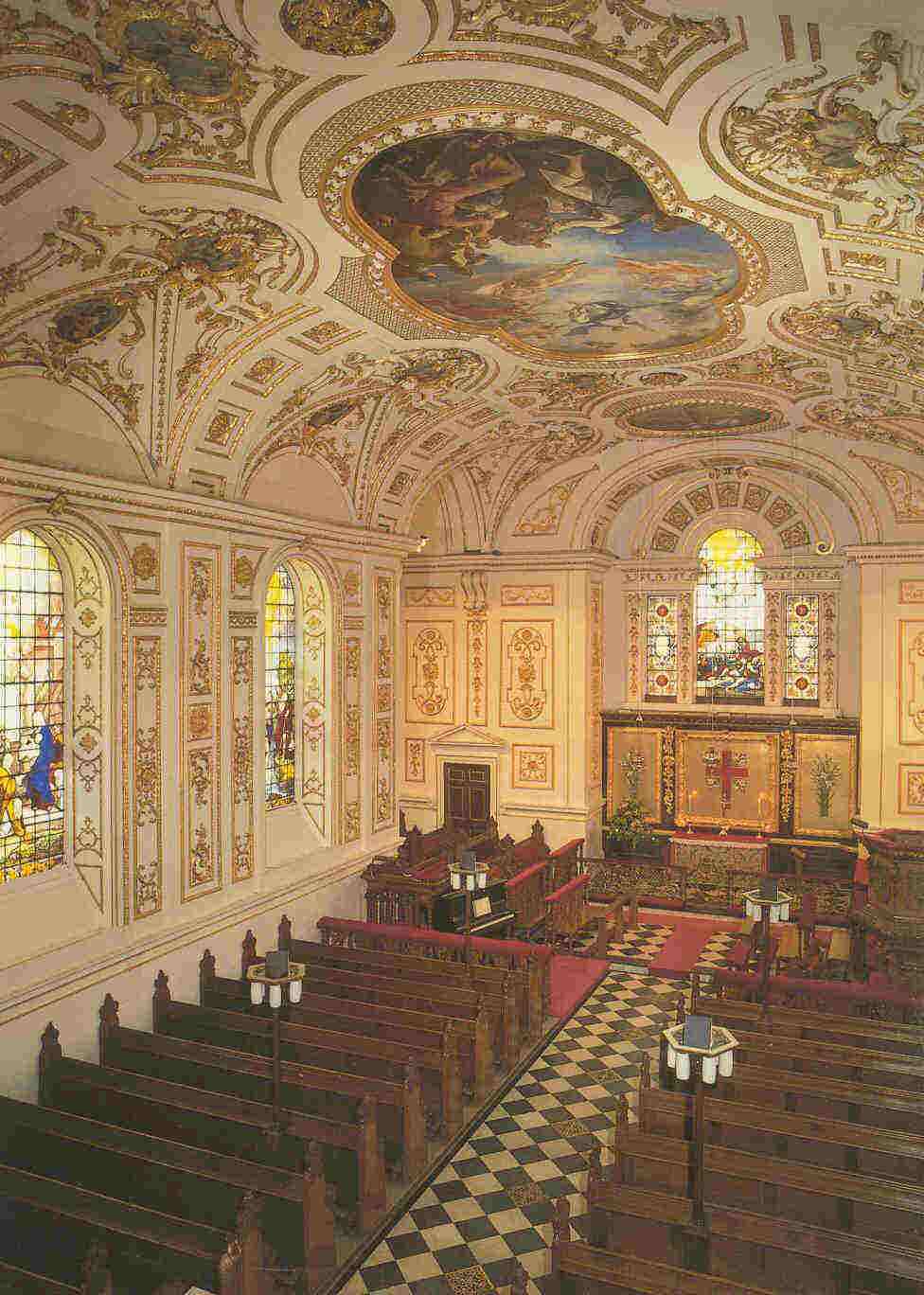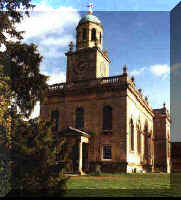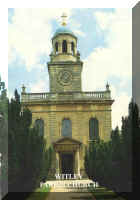|
History of
the church
"Enter and you are transported into a different climate.
Here is the most Italian ecclesiastic space in the whole of
England." (BofE:W quoted in the English Heritage
guide to Witley Court).
This church, which was built between 1733 and 1735, is a
magnificent example of Italianate baroque set within the
English countryside. The church adjoins Witley Court,
which was destroyed by fire in 1937. It replaced an
earlier medieval church that had fallen into disrepair and was
built by the Lords Foley, the owners of Witley Court in the
18th and early 19th centuries. The first Lord Foley was
a commissioner for the construction of churches in the reign
of Queen Anne and it is thought that Great Witley church was
based on a design by James Gibbs.
Thomas Foley of Stourbridge in Worcestershire bought
the estate in 1655. At that time a sandstone medieval church stood to
the west of the current site. His grandson Thomas III decided to build
a new church but died in 1732 before work started. It was
left to his widow Mary and son Thomas IV, the second baron Foley, to
pay for the new church, which was built closer to the court, was of
similar size and had access to the court through a door in the east
transept.
The church was completed in 2 years, probably to designs of
James Gibbs. It was plain with a brick exterior and stone dressings
matching the facade of the court at that time. Built of brick encased with
sandstone, it has wide semicircular-headed windows and
balustraded stone parapets with vase finials at the angles.
The west facade is square and of two stories with large
gallery windows above those of the vestries, and a central
Doric porch with a pediment. The tower rises in two stages
above the parapet, the first square, and the second octagonal.
The whole is surmounted by a cupola, and the triangular spaces
at the angles between the stages are occupied by vases.
Internally the church was built in the Renaissance style and was thoroughly
restored about 1850. The
interior of the church was plain with a flat ceiling, plain windows
and walls, box pews and a high pulpit that had a sounding board above.
The reredos panels were of wood with the Lord's Prayer, Ten
Commandments
and the Creed.
Lady
Foley died in December 1735, before the church was opened for worship,
but had already commissioned the huge monument to her late husband
which stands in the south transept. The memorial, sculpted by John
Michael Rysbrack commemorates Lord and Lady Foley and the five
children who predeceased them. It was completed in 1735 at a cost of
£2000 and is the tallest funerary monument in the
country.

The
Georgian church
The Georgian church was transformed in 1747 when the
second Baron Foley acquired at auction the windows, ceiling paintings
and organ from the chapel of the great house of Canons, Little
Stanmore, near Edgeware, Middlesex. The gilded stucco mouldings were originally created by
Giovanni Bagutti who also worked at Castle Howard in Yorkshire.
Instead of transporting all the plasterwork to Witley, papier mache
moulds were taken from the original designs, a method which had just
been perfected by Henry Clay of Birmingham a short time before the
sail. The barrel-vaulted ceiling was suspended below the original flat
ceiling, so the lightness of using papier mache was very important.
The owner James Brydges, 1st Duke
of Chandos, had lost most of his money in the South Sea Bubble in 1720
and his son had to auction the contents of his mansion built between
1713 and 1743 after his father's death in 1744.
The outside of the court and church were covered in Bath stone.
James and William Forsyth were sculptors who worked on the house,
fountains in the gardens and in the church. The box
pews were replaced, and a new pulpit was added in place of the plain
Georgian one but the original wrought-iron stair railing was
reused. The marble floor that was laid was identical
to the one provided by the Earl in Worcester Cathedral. The font
carved by James and William Forsyth is in white marble with a black
base. The oak wooden cover has a figure of St. John the Baptist on the
top. The communion rails are of wrought brass and ironwork and
the three sanctuary lamps were a gift from Lady Dudley after the safe
return of her husband and his brothers from the Boer War. The
mosaic panels of the reredos were brought from Venice by Rachel 2nd
Countess of Dudley in 1913.
|





